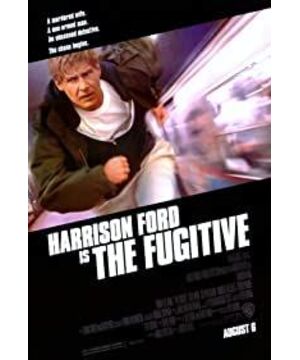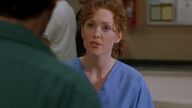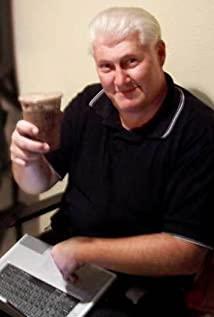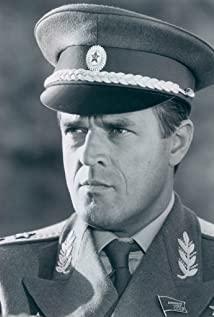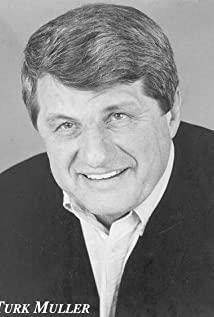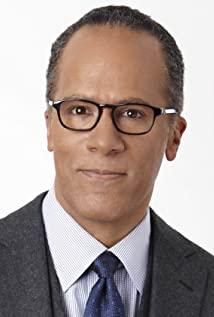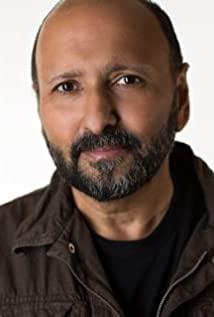1. Plot: typification, rhythm, and details
Desperadoes World is a typical three-act structured film. Its duration is about 130 minutes. Basically, the structure of each act is the golden ratio of American movies of 30:60:30, which is one. A standard Hollywood structured film. The first act tells the story of the protagonist Jin Bo being caught in the murder of his wife and was sentenced to death by the court and escaped accidentally. The second act tells the story of Jinbo digging out the truth about his wife's death and fighting with the sheriff Gila. In the third act, Jinbo unearthed the truth and “dueled” his former friend Charlie to remove his grievances.
What to look at for the analysis of a successful film? The first is its plot. So what is the plot? It is defined in "Modern Chinese Dictionary" as: the changes and processes of events. Therefore, to analyze the plot of a movie is to analyze the main characters in this movie and their final changes in the things he experienced. There are three important questions about the changes and course of events: First, what kind of things we need, that is, the typical plot. Second, what kind of change we need is a matter of rhythm. Third, what kind of experience do we need? These are the details of the movie.
The plot setting of "Death of the Dead" is a very dramatic and typical plot from the beginning. Mrs. Jin Bo was murdered, and all signs indicate that Jin Bo is the biggest murderer. A good opening plot is like a dynamic heart. He gives the whole movie a boost. With the help of a good narrative, he makes the plot even better. Therefore, you can see that the opening setting of "Death of the Dead" is a linear reproduction of time and space, and an interspersed structure with expressive flashbacks. The murder scene brought out by black and white negatives, fast editing, and upgrading processing adds a sense of atmosphere. The interspersed scenes in the car, fundraising dinner, and operating room in the flash front time and space better complement the film's narrative. In this way, in terms of content and form, the film has captured the audience. The reason is that it has a typical theatrical plot and a good audiovisual structure to present the film.
The plot of escape is particularly brilliant, he is the climax of the entire first act. The prison car is a confined space. The time is selected at night, and the escape is performed in this time and space. This is the environment. Time is selected well. Imagine if the escape scene is changed to daytime, to prison or other broader space Here, this tension will be much inferior. The plot continued to develop. The car fell into the valley and one of the policemen was injured. He gave Jin Bo his entire sight here. What would he choose? Is it to save? Or escape? Or something else? Before the development of this matter was over, a train entered the scene. The policeman who had just remarked was the first to escape from the car, and another black prisoner also escaped. Only Jin Bo was left. At this time, the rhythm had improved. Soon, Jin Bo chose to save the man and escaped at the moment of his death. A careful analysis of this small scene reveals three plot points: fighting in a confined space, making decisions at critical moments, and escaping in crises. The time and location of the plot selection are extreme, detailed and rhythmic. There are also many plots that are similarly handled perfectly. For example, the scene of "Police and Bandit Chase" with Gila for the first time: the location is selected in a closed tunnel and sewer. It was forcing Jinbo to reach a crisis point and then developing. The tunnel found a sewer and jumped into the waterfall at the end of the sewer. This jump also brings the movie to the second act: Jinbo digs into the truth.
2. Structure: Form and Means
If the plot is the content of the movie, then the structure can be regarded as the form of the movie. What means and what structure is used to deal with the content of the film is a question related to the success or failure of the film. The structure as a whole: is the beginning, development, climax, and end of a movie; it is construction, confrontation, and end; from another perspective: what kind of method is used to tell the story: is it sequential, reversed, or interspersed, etc. .
The main task of the first act, the film needs to allow the audience to quickly enter the story, establish the dramatic premise of the film, depict the scene of the story, establish the relationship between the main character and other characters who surround him and move around him, and empathize with the main character figure. "Death of the Dead" created the first act and its good atmosphere in a typical drama setting. Through the portrayal of the main character Jin Bo in several events, the task of the first act has been accomplished splendidly. When the second act enters the stage of film development, in each act, each paragraph, and each scene, the structure can be divided into a more fine-grained structure---inheritance and transformation. In the second act, Jin Bo returned to Chicago, undertook to investigate the Cook County Hospital, and then locked up five suspects. Together, he found the killer Sykes who killed his wife.
The second act has the longest time in the movie. At this time, the dramatic needs of the main characters are already very clear. The characters need to encounter obstacles one by one. The main action supporting the second act is confrontation. Jin Bo's dramatic need is to dig out the truth about the murder and wash away his grievances. While he is digging out the truth, the obstacle is Gila's obstruction. For Jin Bo, first he returned to Chicago and rented a house with a stable habitat. Then he started investigating the Cook County Hospital, locked down five suspects, and found the murderer Seke, who killed his wife. S. In this narrative structure, it is Gila who followed Jinbo's route, and the two sides began to occlude closely. What the audience sees is what Jinbo is doing and what Gila is doing. The way to improve the rhythm is that on the one hand, the audience urgently needs to see the truth, on the other hand, there is a "fight" between Gila and Jinbo in the process. In order to pave the way and reverse the ending of the third act, the relationship between Jin Bo and Gila is dealt with here, without the two head-on confrontations. Gila investigates Jinbo's residence. Jinbo is not at home, and Jinbo has just left in the hospital. Gila arrived. The image of Jinbo in Gila's eyes began to "face up". After investigating the Yorkshire Hospital, the two of them are in the narrative structure. The relationship has been treated with time and space to become ambiguous and complementary. It has slowly transitioned from a fight to a collaboration between the two. Although in the climax of the second act, Jin Bo lurks to the Judicial Building, Gila rushes, and the two meet on the stairs. In a head-on conflict, Gila even shot Jinbo, but this is also a turning point where things must be reversed. After all, the law of narration is the law of life, and often things develop to one extreme and they must develop in another direction. There are also two indirect positive interactions in the second act, which are two phone calls, one is when they first arrived in Chicago, and the other is when they discovered the relationship between Sykes and Lanz.
In the linearly reproducible space-time processing, there are also two special space-time processing methods in the second act. Once it was a nightmare, and the other time, when I went to Sykes's house, I found Lanz's flash memories. Nightmare is a really good transition. The second act takes place between Jin Bo discovering the prosthesis in the hospital and forging his ID card to enter it and the police taking away the drug dealer's son from the rented apartment. This transition adjusts the rhythm, and the audience needs to relax appropriately in the tense plot. This relaxation is the processing of expressive dreams. After the rhythm rises again, the police come to the residence to search. In the clues of the characters, the dreams express the anxiety, anxiety, and helplessness of the characters, and the audience can better sympathize with the protagonist. Its application is multiplying in one fell swoop. Making structure is like cooking small fresh food, knowing what to use when and what to use.
3. Characters: Character Empathy and Character Relationship
Characters are the soul of the movie, and the plot is carried by the structure, and it is the characters. Throughout the history of the development of movie genres, there is also the history of the development of genre characters. Traditional genre movies need characters with both positive and negative polarities. Action movies need tough guys, and "Death of the Dead" is exactly what two tough guys called: Harrison Ford and Tommy Lee Jones. The two of them are like ice and fire, Ford's lack of words and wit, Jones's self-confidence (even a little conceited) image of a big man. The performances of the two movie kings make the characters come alive. Through the choices of the things that the characters encounter, our trust in the two characters has been established.
The third act is also the climax of the movie, where the characters begin to be rich, and the relationship between the characters is also richer. On the one hand, there are Jinbo and Gila, on the other hand, there are Sykes, Lanz, Charlie, and the symbolic mediocre Chicago. police. The relationship between the characters here are Jinbo and Gila, Jinbo and Sykes, Jinbo and Lanz, Jinbo and Charlie, Gila and Sykes, Gila and Charlie, Lanz and Charlie, and the third act of a good movie is often Will reverse the plot of the movie, especially the evaluation of the action and suspense of this type of movie has become the most important element. Charlie became the real antithesis, and the film also completed his reversal. He was cleverly presented in the film. The first act and the second act are the passages of his possession, and the third act is his performance. paragraph. The relationship between Jinbo and Gila went from a frontal struggle to a more ambiguous one to a cooperative confrontation with the enemy.
The success of the characters is that the main characters make the audience empathize, the richness of the relationship network of the characters, the extreme conflict between the characters, and the prominence of the supporting role to the main body. All of the above are found in "Death of the Dead".
4. Genre movies and mainstream American culture.
From David Porter's "The Train Robbery" as the embryonic form of western films and action films, genre movies have been over a hundred years old. They are the products of formulas from the earliest simple genres. So far, it has developed into multiple types of fusion. "Death of the Dead" is the product of the fusion of action, suspense, police, crime, and buddies. This fusion enriches the narrative of the movie and makes the movie more watchable. By the third act, there are not only the action elements in the action movie, such as the fight between Jin Bo, Charlie, and Gila at the press conference, and the mystery in the suspense film is revealed. It turns out that Jin Bo's friend Charlie is the manipulator behind the scenes and behind the crime movie. The conspiracy, the fuse of all these events, is the dissatisfaction of people's desires, the type of buddies, the mutual sympathy between the two men, and the two men in the car at the end of the movie are full of ambiguous conversations.
Looking at genre movies further, what is it? It is the output of a certain mainstream culture on the basis of an enjoyable story. As a mixed culture, American culture is characterized by personal heroism. Its characters are also tall, large, and comprehensive characters. Jin Bo shaped by Ford. He is a typical positive character, handsome tough guy, unjustified, wit, kind, compassionate, and not offensive. As the most important element of the theme, the establishment of the character is also the establishment of the theme orientation. Through the narrative of the plot, the most superficial theme of the film is justice over evil. Potentially, it also promotes the merits of American politics. It is personal heroism and the cooperation of the judicial department to complete the evil prohibition. Although you watch many American Hollywood movies, they promote ugly American politics. Under this kind of politics, There will definitely be people in the upper-level relationship that will take the lead in matters.
The development of Hollywood movies is indeed a good thing that kills two birds with one stone. It has made money and completed the political stability at home and the export of American culture abroad.
V. Reference to Chinese film genre culture
At this point in the analysis, it is also the end of the film review. Chinese films have also entered a period of transformation and development, especially how to promote mainstream films. Is it a copy of Hollywood in the United States, or is it processed and borrowed from the soil of China? The author prefers the latter. Chinese martial arts films have been successfully used and processed by Hollywood, and only then has the success of "Death End" today. Chinese films need to refine the types of films and relax a certain part of the censorship, so that creators have broader creative freedom. After all, whether film is technology or art, culture or morality, all film workers have the aspirations of literati.
The Hong Kong film "Infernal Affairs" and Scorsese's "Infernal Affairs", I prefer the former. The former is a thief who possesses a broad Chinese philosophy, but also has the right way to sacrifice the five thousand years of China’s essence and philosophical heritage. The person is much superficial.
I believe that in the future, Chinese genre film culture will be rich, and domestic action films will also become a high-quality film that can compete with Hollywood.
View more about The Fugitive reviews


